Right now I don’t have a small camera that I like to shoot with. The shots today are from my unloved old SONY DSC T2.
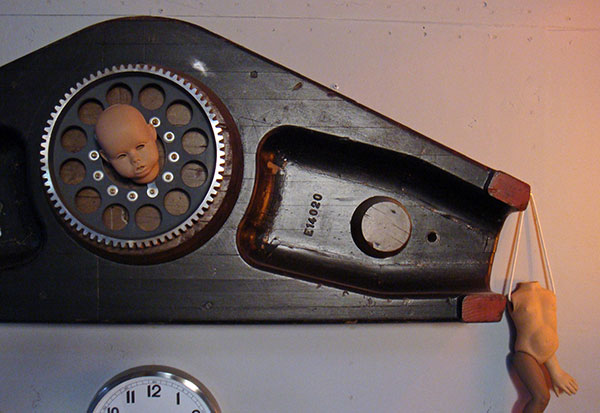
[An artwork on the wall of the studio/dwelling of the photographer Bart Nagel and his partner Bonnie Powell, who invited us to a nice open house yesterday. Thanks, guys!]
My Canon G10, which I liked a lot and have been using regularly, stopped working about month ago—it was under warranty, being exactly a year old. I mailed it back to the factory repair service twice, and they didn’t fix it either time. They’d say they’d fixed it, but it would still be broken. They finally said the problem was with the built-in, retractable lens cover, and that this is my problem.
I did some casual checking around and I think the repair could run $150 or $200, which isn’t really reasonable for a camera that cost me about $400 a year ago. So it’s farewell, G10. I took over 5,000 pictures with it over the year that I had it, so I got fair use out of it. Frankly, if you shoot a lot, you can’t usually expect a digital camera to last much more than a year.
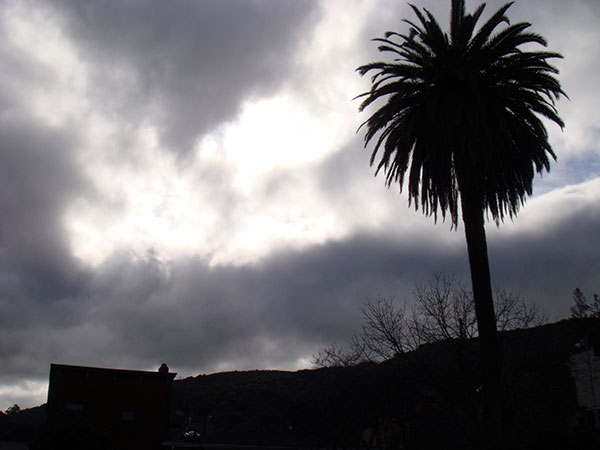
One minor lesson here. Canon and some of its more favorable reviewers like to say that the G9, G10, G11 models are “built like a tank.” That’s a carefully crafted illusion. They make the cameras out of metal, so they do feel solid. But any retracting lens system is highly vulnerable to being shoved out of alignment. And you may not always be the only person who handles your camera. And even if the alignment problem doesn’t arrive, the leaf lens cover seems to be very fragile as well. It’s the heavy-duty SLR models like the Canon 5D that are built (somewhat) like tanks. The solid appearance of a G model is really just a cosmetic trick.
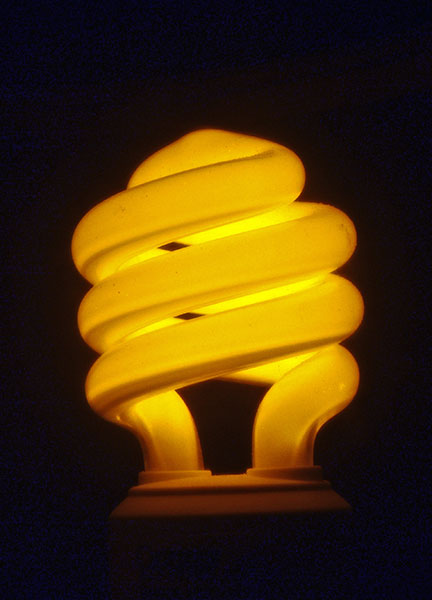
So now what do I put in my pocket? I considered dropping back down to the SONY Cybershot DSC T2 touch screen model that’s been moldering in my bookcase. But, stepping down to such a poor image quality is hard to take. The lens, the sensor, the processing—they all seem second-rate. And, for me, the dealbreaker for this model has always been that the frikkin’ touch screen doesn’t work reliably. No matter how hard I try and bend my will to the chip’s, no matter how many times I recalibrate it, even if I use my fingernail instead of my finger, only about sixty percent of my screen taps on the SONY DSC T2 will register and work. It’s not like the touch-screen problem is unsolvable, by the way—my impression is that iPods don’t have much of a problem. But I hate touch screens anyway. I much prefer the positive feedback of a button.
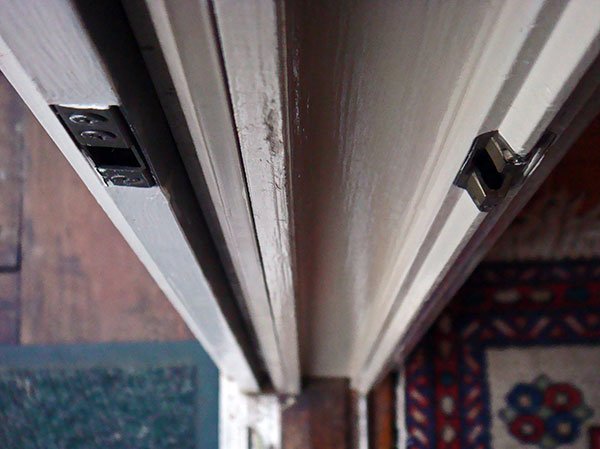
I could slavishly buy a Canon G11 for my walking-around camera, but there’s another problem with the G series that’s been bugging me all year with the G10. They don’t fit in my pocket. I have to wear them in an awkward belt-pouch, shove them into an overcoat pocket, carry them in a knapsack, or dorkily wear them on a strap around my neck. “Hi! I’m a goob!”
The whole digital camera industry changes every couple of years, and one of the new waves are the SPS (Shirt Pocket Size) high-quality digital cameras in the $400 range. Two of the main contenders here are the 2008 model Panasonic Lumix LX3, which has the glamour of a Leica-designed lens and the 2009 model Canon S90, which has the same sensor chip and processing software as the Canon G11.

I’ve been a Leica lover for decades, but I like Canons a lot too. If there were a new Panasonic LX4 out, then I might well go with that. And the fact that the Panasonic LX3 has a physical lens cap object instead of a leaf-based lens-cover is really very tempting. But…the fact that the Canon S90 model is a year more recent than the Panasonic LX3 makes a difference to my tiny lemming-like consumerist mind.
I cruised a number of reviews—over time, if you’re a camera-drooler, you learn that certain reviewers have tastes and shooting styles that match yours. My favorite reviewers, Ken Rockwell and Luminous Landscape, encouraged or at least abetted me in going ahead with the Canon S90. And Ken Rockwell’s posted shots with his S90 really knocked me out, they look like the shots I’ve been getting with my G10.
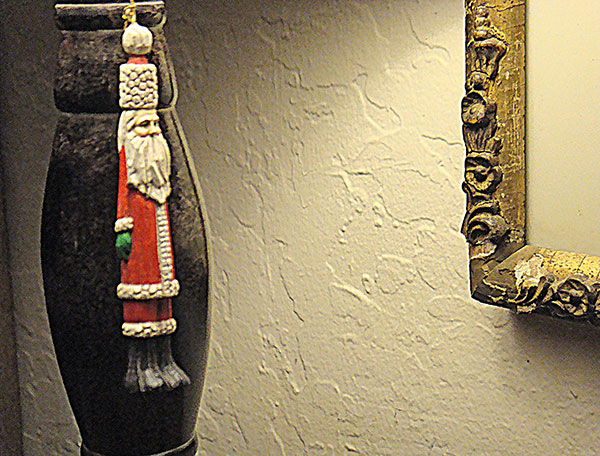
So I ordered a Canon S90 from Adorama today. You’ll probably be seeing images from it in my posts before long.









February 22nd, 2010 at 3:20 pm
Rudy, I’m sorry you’re telling instead of asking, or I would have recommended that you look at a niche camera: the Ricoh GR Digital.
When a friend let me play with his just-purchased GR, I was really impressed. It’s a very capable camera, “disguised” in a tiny and very light digicam body. (It had better be capable, for its price of $700.) Note the 28mm fixed lens; there is no zoom. For that tradeoff you get up to F1.9, real usable ISO 1600 and 1cm macro capability. Not bad!
Said acquaintance then proceeded to sell me the camera he used before the Ricoh: a Lumix LX3, which I adore. Hah.
February 22nd, 2010 at 3:34 pm
I want ’em all!
My reader Clear Menser sent what seems like a useful suggestion:
“I do have a bit of advice, if I may. Please pick up a screen protector
(I don’t understand why the screen’s aren’t just build robustly).
http://www.amazon.com/Lexerd-PowerShot-TrueVue-Crystal-Protector/dp/B002TCB2NQ/ref=sr_1_1?ie=UTF8&s=electronics&qid=1266868105&sr=8-1”
I may get one of these, it seems to be a stick-on rectangle of plastic for $10. In the past, most of my viewscreens have indeed gotten rough.
February 23rd, 2010 at 4:01 am
I gave up on pocket cameras with vulnerable telescoping zooms after they all died from grit, switched to Pentax waterproof/dustproff Optios, but the image quality was bad. Most recently I bought a Canon PowerShot D10, which is much better, even when not underwater.
February 24th, 2010 at 8:44 am
I’ve been using the Panasonic Lumix LX1 for about 5 years now,
close to 20,000 pictures taken and no problems so far.
I’m also using Eye-Fi and that really speeds up the process
of getting the pictures into the computer.
I’d love to get the Panasonic Lumix DMC-G1 as my upgrade.
February 28th, 2010 at 11:40 pm
cool Roo – i traded my G10 for a S90 too. pretty good for a pocket cam.
March 2nd, 2010 at 11:17 am
If lil’e the photo pro has the S90, I made the right choice! And I seem to be getting some good pictures:
[A rain-covered deck shot with the new S90. Keep in mind that all the images in the main part of this post are NOT taken with the gleaming new S90, but with an old junker that was around the house.]
I’m still working out the best settings to use. I kind of like Ken Rockwell’s notoin of having the barrel ring act like a click zoom, it’s fun that way.
And for now I have the ISO setting under the shortcut key. I’m finding that it’s best not to change the ISO in any case. The Auto ISO in combination with the IS seems to find the sweet spot pretty well. And dialing the ISO up past 400 gives you spotty images.
One thing I haven’t checked is whether the image noise might be less if I dial the image size down from 10 Megapixels to 6 Megapixels. I’m thinking that maybe with the lower res, each image pixel would then be getting info from a bigger (and thus less noisy) area of the sensor chip. I’ll try that today.
A lot of the S90 reviewers griped about the loose exposure adustment ring on the back…but I like this control fine. I actually use it sometimes in any case, when I don’t feel like doing an awkward exposure lock routine.
The one design feature that is bothering me is that I keep mistaking the Ring function button on top for the On/Off switch. Seems the Ring Function button could be a lot less prominent, but I’m guessing it’s up there as a kind of selling point. Like—Look at THIS feature!
September 20th, 2010 at 12:10 pm
I posted about equipment in your January “Photoblogging” entry, mentioning the Pentax K-x as being worth a look for its small size, low cost, low light capability, decent kit lens and so forth. I forgot to mention the in-body image stabilization which, while not as good as the 3-4 stops advantage on expensive lenses, gives 1.5-2 stops advantage and works on all lenses. The K-x body also costs about half what most of those fancy lenses run. Combined with a clean ISO 1600-6400, depending on print size, the advantage is substantial over Sony and Panasonic which are always very noisy in low light (at least in all the tests I have seen – and the SNR disadvantage always remains at lower ISOs, too). The big Canon 5D you have is very nice, and Canon lenses are hard to beat, but I think the Nikon D3s is a bit better for low light. Too bad they are both so big and expensive.